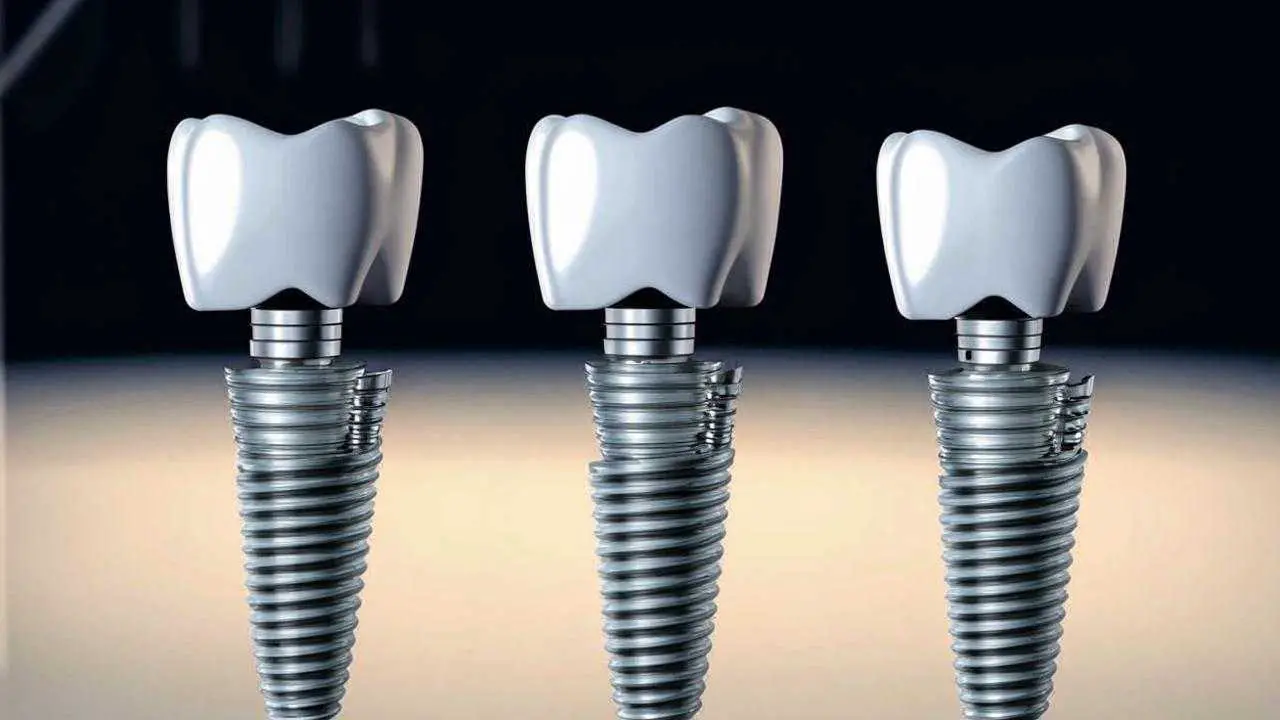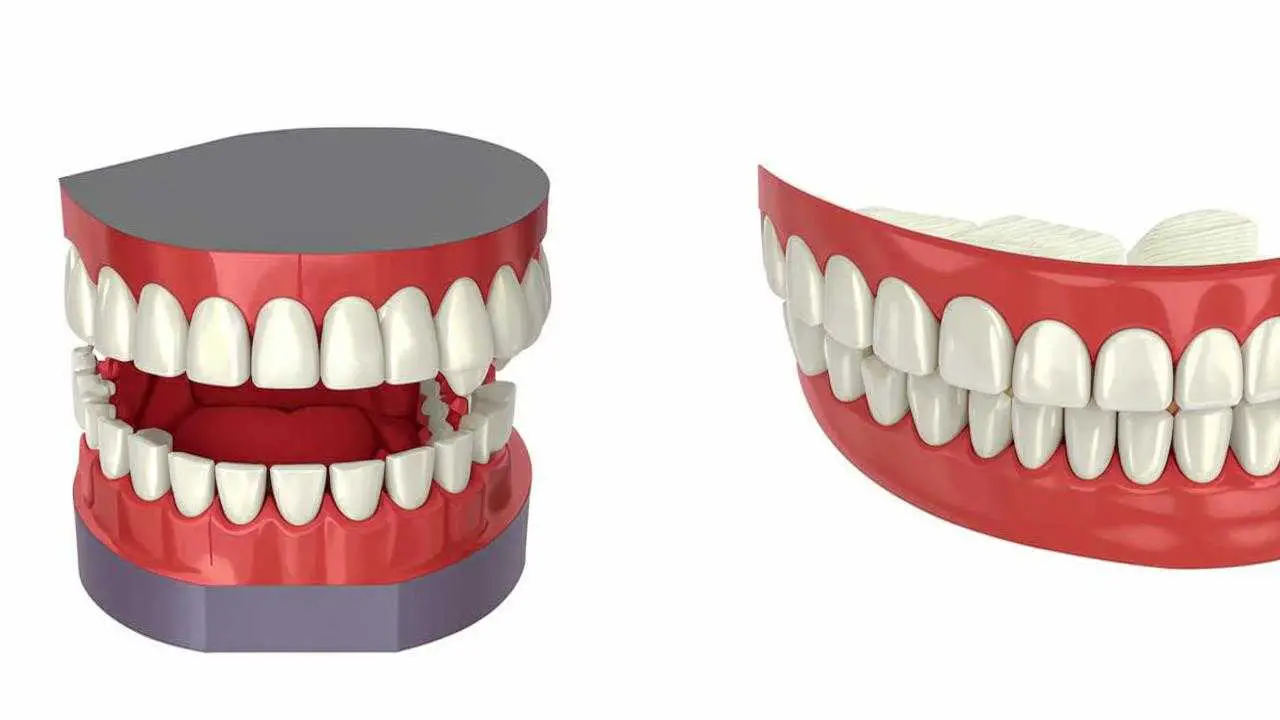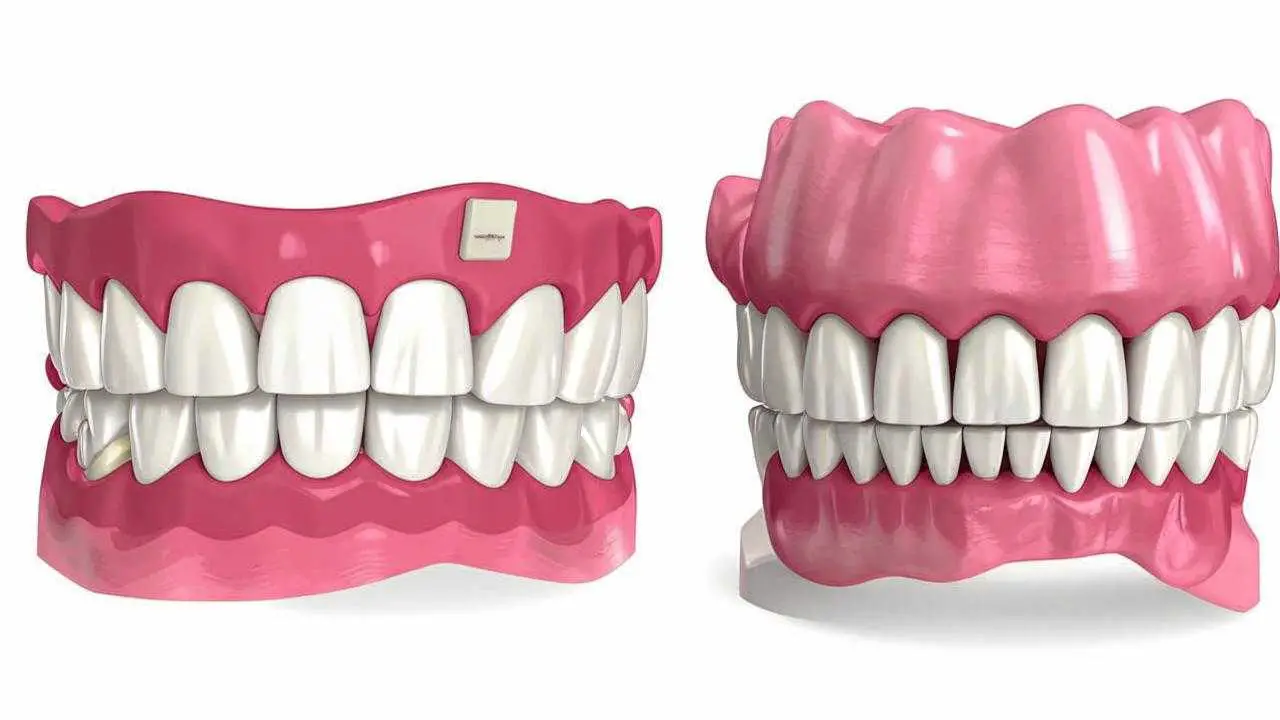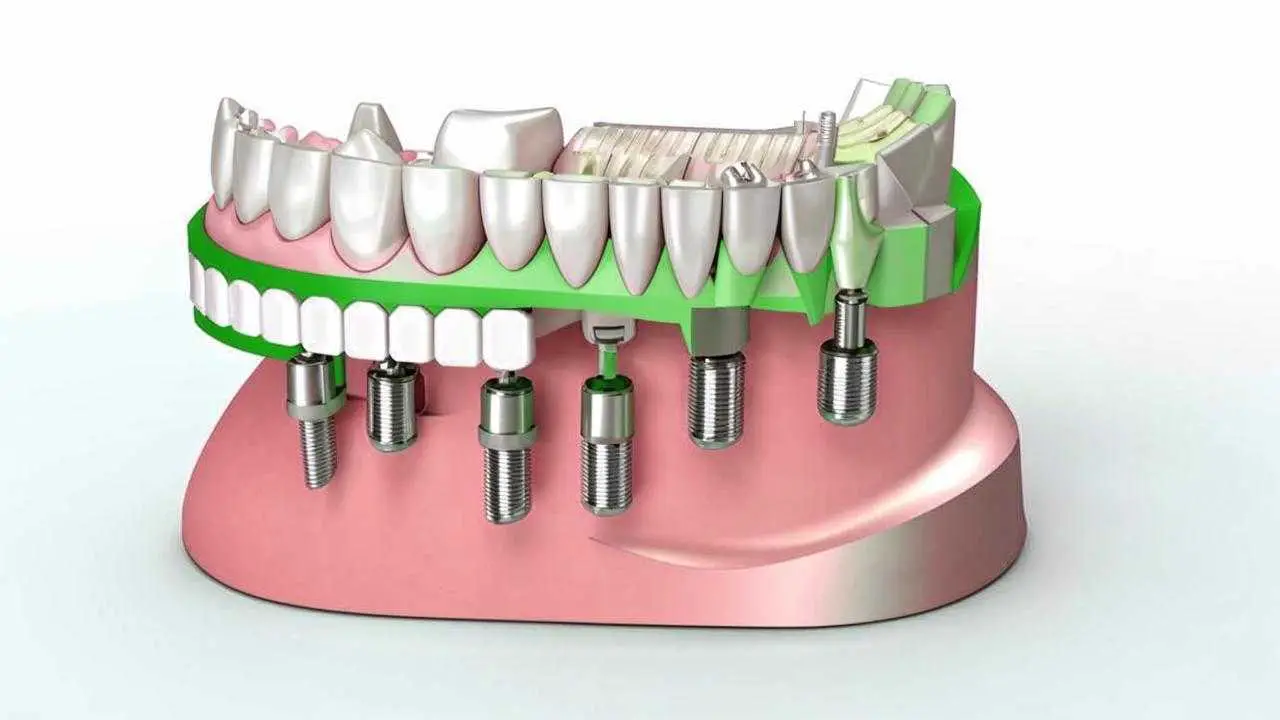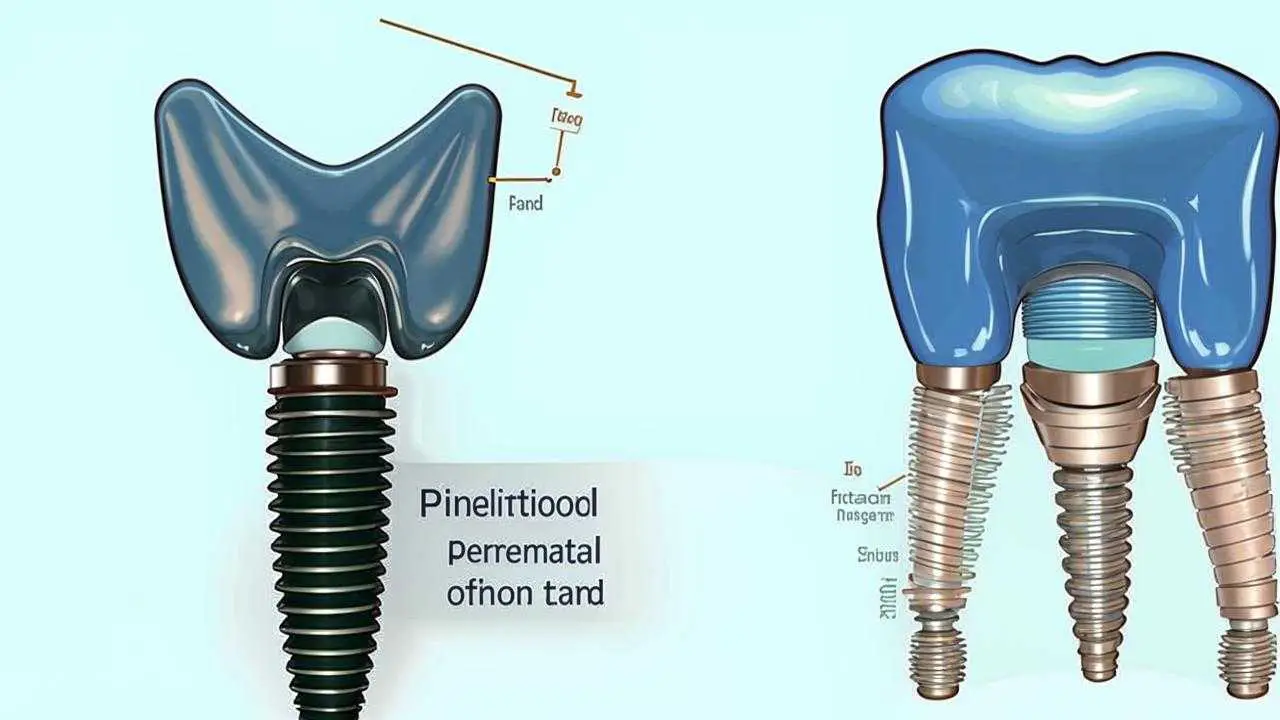Adentia is what dentistry calls the loss of all teeth. Teeth are lost as a result of trauma, eating habits, and poor hygiene. As a result, 25% of the population after the age of 60 suffer from missing teeth on one or even two jaws.
Until recently, the only solution to complete tooth loss was removable prosthetics. In recent years, full implant dentures have become increasingly common. Why do patients choose implants? The main reason: only implants perform the same functions as natural teeth and look even better than them.
Types of prosthetics for missing teeth
Removable dentures are a quick and relatively inexpensive way of restoring teeth. But they have their disadvantages:
- They restorechewing function only by 70%Food is not sufficiently chewed, this provokes GI diseases.
- They do not distribute the load evenlySome areas are more involved, some less. The pressure on the gums is different, it affects the relief of the jaw.
- They come off at the most inopportune momentsFull dentures in theupper jaw are often more successful because there is enough space for the base. On the lower jaw, there is not enough space, the structure does not hold so well, and special aids are needed to strengthen the fixation.
- They have to be changed frequentlyThere are 2 reasons for this: wear of the material (especially acrylic) and changes in the relief of the oral cavity. Over time, without sufficient load and adequate nutrition, the bone tissue atrophies, the gums subside. Even a denture that is resistant to aggressive influences ceases to fit.
The main disadvantage of removable dentures is that they do not stop bone atrophy. The bone becomes thin and loose. Dental and, as a consequence, general diseases develop. The mouth falls open, deep wrinkles appear. Alveolar processes (protrusions for teeth) atrophy, facial geometry is disturbed, dislocations and subluxations of jaw joints develop. Life is no longer pleasurable. Dentures are uncomfortable, but without them, diction, smile aesthetics, chewing and swallowing suffer.
Acrylic prostheses absorb pigments, are covered with micropores, and often break. Nylon structures poorly distribute the load, accelerate bone resorption. All this can be avoided by fixed full dentures on implants.
Modern methods of tooth restoration
An implant is a titanium post that takes the place of the lost root. As a result of osseointegration, it overgrows bone tissue and becomes part of the jaw system. The stress on the implant stimulates tissue metabolism and enriches the blood with oxygen. Nutrition and regeneration prevent bone atrophy.
Implant prosthetics for complete adentia not only brings back the smile, but makes it better. There are no deep wrinkles, the jaws are no longer sunken, the correct occlusion (contact of the teeth) has a positive effect on posture.
Types of implant prosthetics in the complete absence of teeth
Osteointegration is a type of fixation of the post, in which it grows into the bone tissue without an intermediate layer, becoming one with it. This allows the implant to take over all the functions of the root, stop bone atrophy, and restore youthfulness to the smile. In the classical method, the implant is inserted into the jaw, then wait for its engraftment (3-6 months), and then perform prosthetics. The method is successfully used for single restorations, but it is not suitable for restoring the entire jaw.
The advent of multiunits, products in which the post and abutment (adapter) represent one whole, has made it possible to make a full denture on implants, immediately after their installation. Patients no longer have to hide their mouth behind the palm of their hand, but can smile, talk and chew freely while the healing process takes place. Dentists have developed several methods for full implant dentures.
All-on-4
Four implants are placed in the jaw: 2 in the area of the front teeth and one on each side. The lateral posts are placed at an angle. This increases the area of adhesion of the post to the bone and gives more possibilities for prosthetics. This is not the only advantage of the method. The fact is that the method of jaw on 4 implants gives an opportunity to improve the quality of life for people with large bone loss. Patients who lost their teeth long ago or who have diseases like osteoporosis used to be on the list of contraindications. Now this list has been significantly reduced.
But the method also has disadvantages:
- The artificial jaw consists of 10 teeth, not 14 like a natural jaw. This is better than nothing, but such a jaw does not fulfill all the functions to the end.
- A slight displacement of the implant backwards, in front, a decrease in the distance greatly affects the comfort and aesthetic appearance of the prosthesis. In advanced clinics, the problem is solved with the help of surgical templates and digital smile technology. Small dentists cannot afford the costs of such methods, and mistakes are not uncommon.
- In case 1 implant does not take root, the jaw cannot be set, 3 implants will not be able to bear the load and it will be uneven. Products of well-known companies take root in 99%, but they are expensive. Little-known brands are affordable, but the guarantee of engraftment is lower.
All-on-6
To increase the number of artificial teeth and give greater stability to the prosthesis helps the method of prosthetics on 6 implants. Full jaw prosthetics is performed in the same way as in the case with 4 posts: 6 implants are inserted into the upper or lower jaw. The jaw is then attached to them on a titanium beam, which helps to redistribute the load. After grafting, the temporary prosthesis is replaced with a permanent one.
The number of teeth in this type of implantation increases to 12. The jaw is more stable. If 1 implant does not take root, the denture can still be used, the load will be taken over by the remaining 5.
This type of implantation is somewhat more expensive, so if the bone density is normal, implantologists advise to insert 4 implants, and to resort to 6 in case of large bone loss.
However, with any of these techniques, the tissues in the area of the front teeth need to be preserved well enough, and the temporary prosthesis has to be replaced by a permanent one. In addition, there are clinical cases in which even 6 implants are not sufficient for the normal functioning of the prosthesis.
Resmile
This method offers an individual approach to complete fixed prosthetics: the number of implants differs from case to case and can be up to 12. The price is not affected in any way. The number of teeth is increased to 14, as in a natural jaw.
Swiss ROOTT implants are used in the protocol. They have a wide range of models, the implantologist can easily select a post for each clinical case. Some implants are placed vertically, some at an angle. Their length also varies. The result is a stable jaw with a bite force close to the natural one. It is possible to do without bone grafting in most cases, and if it is necessary, it is performed simultaneously with the installation of implants.
Another difference of the innovative Resmile technology is that full implant prosthetics is performed immediately with a permanent prosthesis. There is no need to wait for the pins to heal and only then change the temporary denture to a permanent one. The patient gets a perfect smile once and for all. Or at least for the next 20 years. That’s how long a fiberglass ceramic composite denture lasts. Then it is simply renewed.
Other advantages of the method:
- A small list of contraindications. The method can be used in diabetes, AIDS and HIV. Suitable for patients with osteoporosis, narrow alveolar ridge and periodontitis.
- The minimally invasive method of implantation (through a puncture in the gum) reduces the rehabilitation period to 1 week.
- Restoration of masticatory function is close to 100%.
Minuses of the method: it can be applied only in clinics with modern equipment. The implantologist needs to undergo special training. This makes the application of the method limited. It is applied only in a few clinics, mainly in Moscow and St. Petersburg. It is one of such clinics – Moscow center of dental implantation ROOTT. The specialists of the ROOTT MDI participated in the development of the method and have been successfully using it for several years.
What the success of complete implant prosthetics depends on
Implantology is a field of professional competence. The skill of the surgeon determines 80% of the success of the operation. But everything must be taken into account: the quality of the implant itself and bone density, among other things.
The latter problem is solved by pterygoid implants. This is a relatively new type of pins, the length of which allows them to be placed in the wing (pterygoid) bone. There, the tissue density is higher and the implants are more stable. At the same time, pterygoid implants are not as long as zygomatic implants and are safer to place. The post engraftment rate is above 97%.
Pterygoid implantation is suitable for patients with pronounced bone atrophy, especially if bone grafting is not indicated for some reason. This operation makes total implant prosthetics possible for patients who cannot be treated with other implants.
Prosthetics in the complete absence of teeth brings back not only a smile, but also self-confidence and the ability to enjoy life to the fullest.
